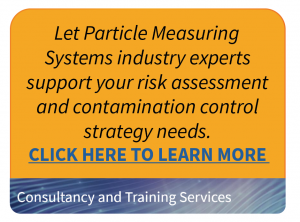What are ATMPs?
Stem cells are categorized as Advanced Therapy Medicinal Products (ATMPs) when undergoing substantial manipulation or when used for a different essential function. ATMPs are medicines for human use with gene, tissue or cell components. They can be classified into gene therapy medicines, somatic-cell therapy medicines, and tissue-engineered medicines, depending on how the medicine works in the body1.
In this blog series, we will be reviewing the European Commission’s 2017 Guidelines on Good Manufacturing Practice Specific to Advanced Therapy Medicinal Products. The standard follows sterility assurance principles found in other guidelines for the manufacture of sterile products, such as Annex 1, Manufacture of Sterile Medicinal Products5. The scope covers all ATMPs granted marketing authorization, including those under hospital exemption.
Steps to Ensuring Quality and Meet ATMP Regulations
Every manufacturer should have a Pharmaceutical Quality System (PQS), which is the summation of all that is done to meet consistent, demonstrable quality standards. All activities must be effectively controlled for contamination-free finished products.
In order to build the PQS, a risk assessment is performed that encompasses the entire process. During the risk assessment, contamination is monitored to determine process needs, then broken down into individual elements and documented with the rationale for decisions made to mitigate risk. The risk assessment is reviewed regularly as part of quality management practices and product quality reviews. The risk-based approach (RBA) is applicable to all ATMPs and settings, whether they be hospital, academic or industrial, and the quality systems found in each are subject to the same standards.
Sterile ATMPs Regulations
The manufacture of sterile ATMPs has special requirements for minimizing risk of microbiological, particulate, and pyrogen contamination. Facilities and their equipment and processes must have optimal design that has been qualified and validated according to EU GMP Annex 11 and 15. All personnel must be trained with the skill and mission to ensure the product’s quality throughout manufacturing, packaging and distribution processes. The monitoring systems in place must be overseen by skilled personnel. A documented contamination control strategy should contain the detailed approach the company has taken to minimize contamination risk to the product.
Want to read more? Jump to other released posts in this series:
Part 1 of 4: Recent Developments in Regulation
Part 2 of 4: ATMP’s and Regulation
Part 3 of 4: Quality Control Considerations
Part 4 of 4: Stem Cell Process Monitoring
Learn more… Get the full paper here.

